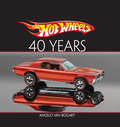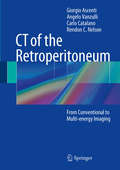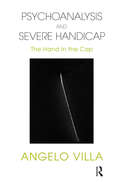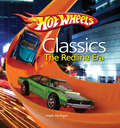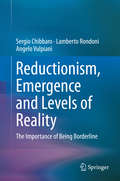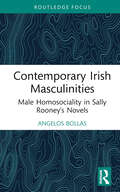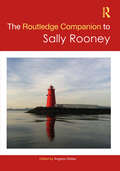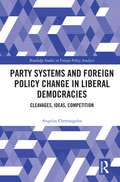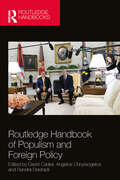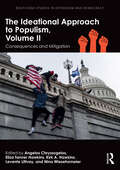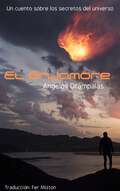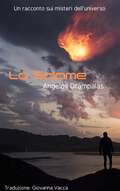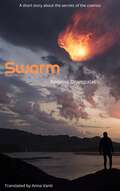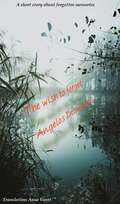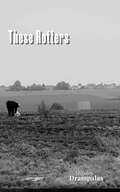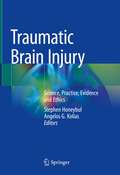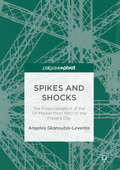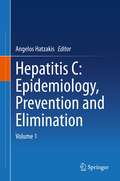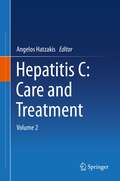- Table View
- List View
Just 30s
by Angelo Van BoggartThe 1930s might have been the greatest 10-year period in the history of the American automobile. Even in the face of a suffocating Depression, American cars continued to evolve with beautiful, streamlined designs that had never been seen before. General Motors began "face lifting" its vehicles with new styles for every model year. Hard-rubber rides were softened by balloon tires, impressive 16-cylinder engines began showing up under massive hoods and hydraulic brakes became the norm. The synchromesh transmission, independent suspension, heaters and radios made automotive journeys more comfortable than ever. It was truly a decade of advancement and achievement for U.S. car makers. In Just '30s, the publisher of Old Cars Weekly and OldCarsReport.com Price Guide celebrates this fabulous decade with a look back at the cars, and car companies, that gave us such great memories.
Hot Wheels Forty Years (Hot Wheels (krause Publications) Ser.)
by Angelo VanbogartIf you're a collector of the ultra-cool, sensationally sleek and super speedy Hot Wheels, you are in for a treat with Hot Wheels: Forty Years. This big, beautiful coffee table book tells the story of these miniature marvels through more than 600 stunning color photos, and historical details including company history, interviews with Mattel designers, major developments and trends. All the attitude and innovation of these revolutionary pocket-sized racers, Redlines, Blackwalls, Number Pack Vehicles, Protypes and more, is captures in the pages of this must-have reference.
CT of the Retroperitoneum: From Conventional to Multi-energy Imaging
by Giorgio Ascenti Angelo Vanzulli Carlo Catalano Rendon C. NelsonThis book provides a comprehensive and up-to-date overview of the continuously evolving field of dual-energy CT (DECT). An introductory section presents information on the physical and technical background of DECT and considers nonspecific and specific software advantages. Clinical applications of DECT in the evaluation of retroperitoneal viscera are then addressed in detail with the help of high-quality illustrations. Particular attention is devoted to the most recent DECT study protocols, software, and applications in aortic, renal, pancreatic, and adrenal disease. A number of case studies are reported that elucidate the advantages of DECT, and the relevant literature is extensively discussed. The book closes by considering radiation dose and dose-saving measures. The simple and practical approach offered by this book will assist radiologists in the optimal routine use and interpretation of DECT in different retroperitoneal sites and radiology technologists in the choice of settings and parameters.
Psychoanalysis and Severe Handicap: The Hand in the Cap
by Angelo VillaThe book Psychoanalysis and Severe Handicap: The Hand in the Cap introduces an original look at handicap, a look aiming at capturing the subjectivity, no matter how weak or uncertain it may be, of the ill Other. In this light the work of operators can become an invaluable support to the creation of the self, a crucial help to self-narration, and a valid contribution to making one's way through the entangled intricacies of language. The text falls into six chapters, which elegantly and accurately lead us into the core of the problem tackled. Focusing on the difficulties implied by the recognition of the ill Other and the acceptance of the otherness, the author attacks those cultural policies which set autonomy and integration as absolute objectives to be achieved in the work on handicap. Instead, the author highlights the need of a path aiming at the structuring of the individuality of the disabled and at the molding of their subjectivity, starting from the subject's peculiarities.
Hot Wheels Classic Redline Era: Hot Wheels - Birth of the Redline
by Angelo Von BogartCombining candy-colored paint jobs with muscle car attitudes and southern California coo, Hot Wheels cars changed the toy world forever in 1968. For the next 10 years as millions of kids discovered the joy of these miniature marvels, one small characteristic came to define this radical die-cast era: the thin red line on the cars tires. Hot Wheels Classics: The Redline Era proudly showcases more than 500 spectacular color photos (so come of the finest cars of this groundbreaking time.) Sprinkled throughout the visual and historical feast, you'll enjoy the commentary from legendary car designer Larry Wood and other Mattel designers. More than 40 years of introduction, Hot Wheels cars have experienced a multitude of changes, incredible success, trials and tribulations, and ultimately crafted one of the greatest American toy stories of all time. Yet is one single feature from decades past that skill defines for many their greatest: the Redline.
Reductionism, Emergence and Levels of Reality
by Sergio Chibbaro Lamberto Rondoni Angelo VulpianiScientists have always attempted to explain the world in terms of a few unifying principles. In the fifth century B. C. Democritus boldly claimed that reality is simply a collection of indivisible and eternal parts or atoms. Over the centuries his doctrine has remained a landmark, and much progress in physics is due to its distinction between subjective perception and objective reality. This book discusses theory reduction in physics, which states that the whole is nothing more than the sum of its parts: the properties of things are directly determined by their constituent parts. Reductionism deals with the relation between different theories that address different levels of reality, and uses extrapolations to apply that relation in different sciences. Reality shows a complex structure of connections, and the dream of a unified interpretation of all phenomena in several simple laws continues to attract anyone with genuine philosophical and scientific interests. If the most radical reductionist point of view is correct, the relationship between disciplines is strictly inclusive: chemistry becomes physics, biology becomes chemistry, and so on. Eventually, only one science, indeed just a single theory, would survive, with all others merging in the Theory of Everything. Is the current coexistence of different sciences a mere historical venture which will end when the Theory of Everything has been established? Can there be a unified description of nature? Rather than an analysis of full reductionism, this book focuses on aspects of theory reduction in physics and stimulates reflection on related questions: is there any evidence of actual reduction? Are the examples used in the philosophy of science too simplistic? What has been endangered by the search for (the) ultimate truth? Has the dream of reductionist reason created any monsters? Is big science one such monster? What is the point of embedding science Y within science X, if predictions cannot be made on that basis?
Contemporary Irish Masculinities: Male Homosociality in Sally Rooney's Novels (Routledge Focus on Literature)
by Angelos BollasBy examining portrayals of male homosociality in Sally Rooney's novels, the book documents how male relationships are formed, challenged, and often disavowed and the profound negative effects this can have for the wellbeing of men. The book also highlights the importance of the sociocultural context within which male relationships are formed and supports that the potential for healthy and meaningful relationships between men depends on how they are brought up to view themselves as men and their role in the society they live in. That is, despite the many examples whereby space for authentic and meaningful male homosociality is limited and well concealed, the book also offers a more optimistic potential for men's relationships by illustrating the significance of broader understandings of masculinity, unfettered by homophobia and misogyny, in allowing for male homosociality with the potential of emancipating men from heteropatriarchal norms which dictate their behaviour toward themselves and others.
Sexualised Governmentalities: Critical Perspectives on Homosexism (SpringerBriefs in Sociology)
by Angelos BollasThis book critically examines the concept of sexualised governmentalities, a framework for understanding the evolving discourse and power dynamics surrounding discrimination on the basis of sexual practices. Central to this exploration is the shift from traditional heteronormative perspectives to a more complex hetero/homonormative context, where the structure and organisation of sexual relationships gain prominence over the gender or sexual orientation of the participants. A key focus of the book is the concept of homosexism within the realm of gay masculinity studies. The author discusses homosexism as a form of discrimination experienced by gay men from other gay men, highlighting the influence of heteronormative patriarchal society on these interactions. It calls for a broader recognition and acceptance of diverse sexual expressions and challenges the reader to re-evaluate the societal norms around masculinity and sexual behaviour. Sexualised Governmentalities is an important contribution to the discourse on sexual identity and practice, offering insights for a more inclusive and empathetic understanding of sexual diversity.
The Routledge Companion to Sally Rooney (Routledge Literature Companions)
by Angelos BollasThe Routledge Companion to Sally Rooney offers an in-depth examination of one of the most influential contemporary Irish authors, Sally Rooney, offering valuable insights into her writing and its socio-cultural significance.This comprehensive collection brings together contributions from international scholars who explore Rooney’s novels through a range of interdisciplinary lenses, including literary studies, gender theory, political analysis, and cultural criticism. The book provides critical insights into Rooney’s exploration of millennial identity, class dynamics, relationships, and the evolving role of technology in shaping human connections. By situating Rooney’s work within both the global context and post-Celtic Tiger Ireland, the collection presents a nuanced understanding of her literary impact.The Routledge Companion to Sally Rooney is essential reading for academics and students studying contemporary Irish literature. The volume not only highlights the significance of Rooney’s work in contemporary literature but also expands on its sociopolitical relevance, making it an indispensable resource for understanding her cultural impact.
Party Systems and Foreign Policy Change in Liberal Democracies: Cleavages, Ideas, Competition (Routledge Studies in Foreign Policy Analysis)
by Angelos ChryssogelosHow do political parties affect foreign policy? This book answers this question by exploring the role of party politics as source of foreign policy change in liberal democracies. The book shifts the focus from individual political parties to party systems as the context in which parties’ ideologies receive precise content and their preferences are formed. The central claim is that foreign policy change arises from within transformed discursive contexts of party competition, when a new language of politics that constitutes anew parties’ self-understanding of what they stand for and compete over emerges in a party system. By comparing cases of contested foreign policy change, the book shows how such transformations in party competition determine whether and when international pressures on a state will translate into decisions to institute foreign policy change and what degree of change will be ultimately implemented. With a novel framework which bridges concepts of international relations and comparative politics, the book will be of interest to researchers and students in the areas of international relations theory, foreign policy analysis and comparative politics, and generally to anyone wanting to understand how and when parties, elections and voters contribute to international change.
Routledge Handbook of Populism and Foreign Policy
by David Cadier Sandra Destradi Angelos ChryssogelosThis handbook provides a methodical, comprehensive, and unifying overview of the vibrant yet disparate scholarship on populism and foreign policy. By mapping the debates and existing findings, as well as presenting the different conceptual and theoretical lenses, the handbook provides new insights as to how, whether, and to what extent, populism influences foreign policy. Carefully selected international contributors connect their own work to others to offer a thorough, theoretically informed, and empirically tested academic treatment of the topic across a number of cases where populist actors are, or have been, in power. Divided into four parts (Concepts and Theories; Factors and Processes; Actors and Structures; Issues and Policy Areas), the diverse and comprehensive insights on the global, cross-regional, and transnational dimensions of populism will be of interest to scholars and students of international relations, political science, public policy, foreign policy, political theory, populism, and area studies. This text will also be of interest to those working from the perspectives of Sociology, Law, and History, as well as to the practitioners of international politics.
The Ideational Approach to Populism, Volume II: Consequences and Mitigation (ISSN)
by Kirk A. Hawkins Levente Littvay Angelos Chryssogelos Eliza Tanner Hawkins Nina WiesehomeierThis book provides a series of specific predictions about the distinct impact of populist ideas.In this sequel to the first volume, the ideational approach to populism is extended, providing a robust theoretical framework for understanding populism’s consequences and for identifying policies that mitigate its most negative effects. It reaffirms that ideas matter, arguing that an ideational definition of populism leads to more accurate, and sometimes surprising predictions about the impact of populism at multiple levels of analysis. The chapters of this edited volume explore the effect of populist ideas in each of four areas: consequences for state-level institutions, voters, and international relations; and mitigation. The ideational approach encourages us instead to invest in more systematic engagement with populists and pay better attention to our communication skills.It will be of interest to students and scholars of politics, international relations, social psychology, and political communication.
The Greek Exodus from Egypt: Diaspora Politics and Emigration, 1937-1962
by Angelos DalachanisFrom the nineteenth century to the middle of the twentieth, Greeks comprised one of the largest and most influential minority groups in Egyptian society, yet barely two thousand remain there today. This painstakingly researched book explains how Egypt's once-robust Greek population dwindled to virtually nothing, beginning with the abolition of foreigners' privileges in 1937 and culminating in the nationalist revolution of 1952. It reconstructs the delicate sociopolitical circumstances that Greeks had to navigate during this period, providing a multifaceted account of demographic decline that arose from both large structural factors as well as the decisions of countless individuals.
El Enjambre
by Angelos DrampalasTras la caída de un meteorito que causará una destrucción masiva en la Tierra, se producirá un descubrimiento que obligará a la gente a unirse para enfrentar esa amenaza inminente. Pero, ¿es esa toda la verdad, o será que las organizaciones que los protegen tienen sus propios secretos? Una historia sobre los secretos del universo y los secretos de los humanos.
Lo sciame
by Angelos DrampalasDopo la caduta di un meteorite che causerà enormi distruzioni sulla Terra, seguirà una scoperta che costringerà le persone a radunarsi per affrontare questa minaccia imminente. Ma è tutta questa la verità, o le organizzazioni che li proteggono hanno i loro segreti? Una storia sui segreti dell'universo e sui segreti delle persone.
Swarm
by Angelos DrampalasAfter a meteorite falls and causes massive destruction on Earth, a discovery will follow that will force people to rally together so as to face this imminent threat. But is this the whole truth, or do the organizations protecting them have secrets of their own? A story about the secrets of the universe and the secrets of people.
The wish to forget
by Angelos DrampalasAn unexpected message from his grandmother makes a man return to his village after many years. The initial nostalgia and beautiful memories will quickly be replaced by something dark hidden deep in the memories.
These Rotters
by Angelos DrampalasAn old man has to protect his sick wife and make ends meet during a zombie outbreak. This short story won the first place in a Greece-wide contest by i-write publications.
Philosophizing Madness from Nietzsche to Derrida
by Angelos EvangelouDrawing connections between madness, philosophy and autobiography, this book addresses the question of how Nietzsche's madness might have affected his later works. It also explores why continental philosophy after Nietzsche is so fascinated with madness, and how it (re)considers, (re)evaluates and (re)valorizes madness. To answer these questions, the book analyzes the work of three major figures in twentieth-century French philosophy who were significantly influenced by Nietzsche: Bataille, Foucault and Derrida, examining the ways in which their responses to Nietzsche's madness determine how they understand philosophy as well as philosophy's relation to madness. For these philosophers, posing the question about madness renders the philosophical subject vulnerable and implicates it in a state of responsibility towards that about which it asks. Out of this analysis of their engagement with the question of madness emerges a new conception of 'autobiographical philosophy', which entails the insertion of this vulnerable subject into the philosophical work, to which each of these philosophers adheres or resists in different ways.
Traumatic Brain Injury: Science, Practice, Evidence and Ethics
by Stephen Honeybul Angelos G. KoliasThis book provides a comprehensive analysis of the contemporary management of all aspects of traumatic brain injury (TBI), combining the findings of several recent randomised controlled trials investigating the role of hypothermia, erythropoietin, intracranial pressure monitoring and decompressive craniectomy in the management of TBI. The book is divided into four sections: the first section covers the epidemiology of TBI, the changing global patterns of presentation, and the basic pathophysiology and classification, while the second discusses contemporary management of TBI, from pre-hospital care, emergency assessment, and medical and surgical management to rehabilitation and social reintegration. The third section then examines the evidence gained from recent clinical trials that have investigated the efficacy of management strategies involving intracranial pressure monitoring, multimodal monitoring, hypothermia, erythropoietin, thromboembolic prophylaxis and decompressive craniectomy. Lastly, the fourth section explores the ethical issues, both at the societal level and on an individual basis. Written by a broad range of experts, this book provides a valuable reference resource for neurosurgeons, intensivists, clinicians with ethical experience and pure bioethicists in their daily work.
Spikes and Shocks
by Angelos Gkanoutas-LeventisThis book proposes that price volatility and speculation in the oil market originate from a decades-long process of financialisation. The author challenges mainstream critical accounts of the market that typically invoke the notion of a global oil shortage and so-called 'peak oil' arguments. Instead, he argues that the development of the market has been punctuated by recurring oil price shocks. Chapters examine the evolution of the international oil market and investigate how, and to what effect, the process of financialisation has transformed the structure and dynamics of the global oil market from 1980 to the present day. In doing so, the book suggests that the process of financialisation is both the cause and the proof of a profound change in the structure of the global oil market, that has turned the triangle of producers, consumers, and mediators that characterised the oil market until the 1980s into a four-tier structure through the addition of financial actors.
Hepatitis C: Volume 1
by Angelos HatzakisThis volume focuses on epidemiology, genetic diversity and global distribution of Hepatitis C, as well as laboratory diagnosis. Furthermore, the book explores the natural history of the virus and discusses international elimination strategies. The two volume work on Hepatitis C introduces to the topic by reviewing virology, diagnosis, epidemiology, prevention and elimination of HCV. The book provides a valuable source at full length for researchers and clinicians working on Hepatitis C.
Hepatitis C: Volume 2
by Angelos HatzakisThis volume provides the reader with a detailed overview of the current state-of-the art approach of Hepatitis C management. It reviews the course of action in handling of chronic Hepatitis C patients with various HCV genotypes and treats special cases such as acute hepatitis, transplant and renal patients as well as people who inject drugs. The two volume work on Hepatitis C introduces to the topic by reviewing virology, diagnosis, epidemiology, prevention, management and elimination of HCV. The book provides a valuable source at full length for researchers and clinicians working on Hepatitis C.
El Reencuentro
by Angelos Ioannis Chanel Karime Otero AmadoFrente a la decisión de cambiar, todo mundo se siente débil. En el imperio veneciano del siglo 17, Mikhaela, una joven en sus veintes, se enfrenta a un desafío. Al conocer a un joven veneciano, Alessio, inmediatamente comprende que él representa mucho más que un simple encuentro en su vida. Al llegar a su vida sin ser invitado, o quizá subconscientemente si lo haya sido, le muestra, por medio del amor, una manera de cambiar, renacer y un reencontrarse con su verdadero ser. La lleva a través de un viaje de preguntas, preguntas enterradas profundo en su alma que despiertan con su incapacidad de detenerlas y finalmente la llevan a la decisión final: ¿Qué está haciendo con su vida? A través de sus palabras, Alessio la acompaña en un viaje interior, hablándole sobre el estado de Ser, y la lleva frente al oscuro túnel de lo desconocido, con una luz brillando al otro extremo, sólo vista por los valientes que pueden cruzarlo sin miedo. Y ahí se enfrenta a la decisión: ¿Entrar en él, dejar todo atrás y comenzar su viaje hacia la luz, o permanecer en la mediocre certeza del presente? Al vivir una vida de mediocridad, de rutina y al enfrentarse a un matrimonio cercano, tiene que decidir: ¿Ser o convertirse? Tiene que decidir entre lo normal, lo común, lo que le dicen sus padres, sus amigos y la sociedad o lo extraordinario, lo imposible, lo que su alma anhela. Tiene que decidir entre su actual pareja, su futuro esposo, o él hombre frente a ella, a quién su corazón desea. Es un libro dedicado a la decisión. A través de cuatro estaciones, este libro acompaña al lector a través del círculo de la vida, un círculo de preparación, de satisfacción, de recuerdos y de vacuidad, las cuatro estaciones que ocurren una tras otra en la vida, comenzando y concluyendo no después de cierto periodo de tiempo, sino después de ciertos eventos. El reencuentro es un viaje al origen, en el que la humanidad fue participe al
La tragedia griega. La crisis financiera de Europa explicada de forma sencilla
by Angelos IoannisAl comienzo de la crisis griega, Manos, un exitoso hombre de negocios de mediana edad, pierde su empleo. Sin oportunidades de trabajo y seriamente endeudado, se retira a un pequeño pueblo costero cerca de Atenas a vivir en la que solía ser la casa de verano de su familia. Sentado en su balcón una mañana, mira al espléndido cielo azul y a las aguas cristalinas. Se pregunta por qué se siente desesperado en un entorno tan bello. Por qué su país, lleno de recursos y de gente preparada, está también desesperado. ¿Qué fue lo que hizo que Grecia se pusiera de rodillas? No le satisfacen las respuestas que recibe de los medios de comunicación. Al salir de su casa se encuentra con varias personas, entre las que se encuentran un panadero, un cura y un banquero británico jubilado, todos ellos con su propia versión. Basado en una historia real, este libro relata un día en la vida de Manos para tratar de arrojar luz sobre la vida en la Grecia de la crisis y para aclarar las verdaderas razones de la deuda griega. De manera simple, explica la estructura del sistema financiero actual y la integración europea. Finalmente, desvela lo que realmente causó la crisis, primero en Grecia y más tarde en Europa. ¿Puede sobrevivir Grecia a la crisis? ¿Hay una solución para Europa?

